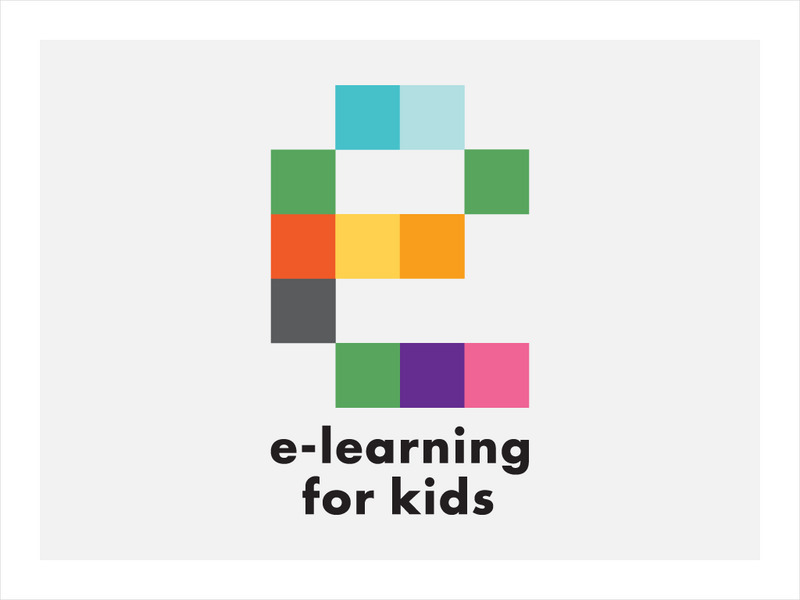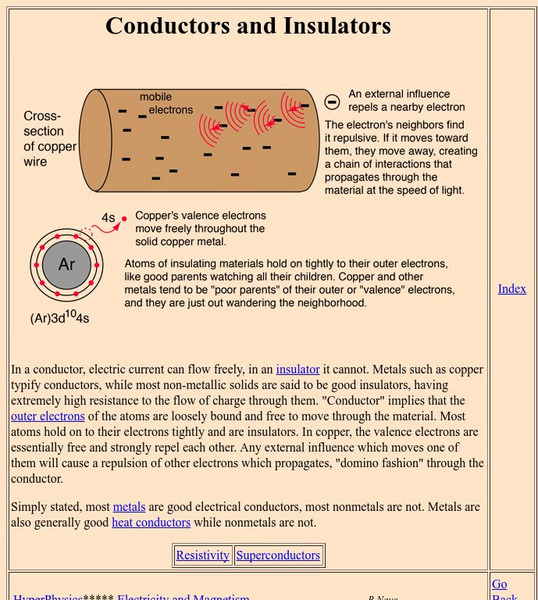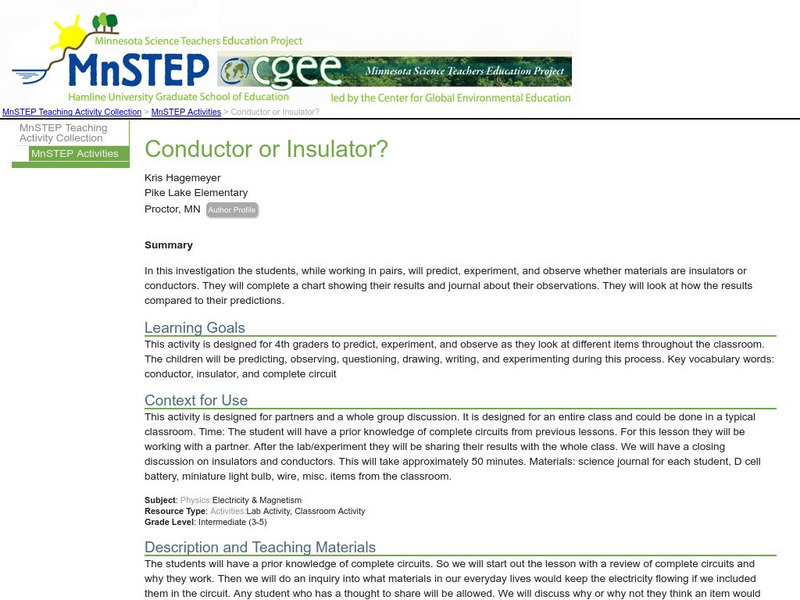Hi, what do you want to do?
Curated OER
Metalloids
Students discuss metalloids, their use as semiconductors, and their impact on the computer industry. They work in groups to create a visual timeline showing the evolution of the computer.
Curated OER
Electricity: Going with the Flow!
Fifth graders explore a simple circuit. They experiment with a wire, light bulb and a bettery to see how many ways they can make the light bulb light up. Students describe how they were or were not ablt to light the bulb.
Curated OER
Circuit City
Fifth graders are introduced to the concept of circuits and how electricity works. In groups, they design their own subdivision with houses in which they have inside and outside light sources. To end the lesson plan, they make the...
Curated OER
Electricity
First graders become aware of the presence of static electricity. They create static electricity using friction.
Study Stack
Earth Science Crossword Puzzle
In this online interactive anatomy crossword puzzle worksheet, students use the 8 clues to find the appropriate answers to complete the word puzzle.
Curated OER
Safety
Pupils investigate the concept of voltage and electricity. They differentiate between an insulator and a conductor in the context of using electrical safety with the help of a doll house. Then students pretend the doll lives in a real...
Curated OER
Using Transistors: Let's Get Transistorized!
Students build two circuits and explore how transistors function. This activity allow them to observe the operation of a transistor as an amplifier.
Curated OER
Scouting for Circuits
Fifth graders investigate electricity and how it used in a circuit to be useful energy. They also use this investigation in order to understand how energy can change forms and still be considered useful if put into the right form.
Curated OER
Fun With Electromagnets
Fifth graders construct their own electromagnet out of copper and nails. They discover what objects could be used for magnets. Finally, 5th graders discuss how electric currents are formed.
Curated OER
Energy
High schoolers distinguish between kinetic an potential energy. They recognize that energy is conserved when changing from one form to another. Students compare the scientific meaning of work with its everyday meaning.
Curated OER
Capacitors: What Are They?
Students discover how capacitors help store data. In this computer science lesson, students investigate how capacitors can store an electronic charge, eventually helping computers store data. Students create their own...
Curated OER
The Little Transistor That Could
Students research the history of the transistor to explore the nature of technology. They complete a worksheet that coincides with given websites. Then they write a one-page essay about their findings.
CK-12 Foundation
Ck 12: Physical Science: Electric Conductors and Insulators
[Free Registration/Login may be required to access all resource tools.] Explores electrical conductors and insulators and the path of least resistance.
CK-12 Foundation
Ck 12: Physical Science: Thermal Conductors and Insulators
[Free Registration/Login may be required to access all resource tools.] Thermal conductors and insulators and the ways they are used.
CK-12 Foundation
Ck 12: Thermal Conductors and Insulators
[Free Registration/Login may be required to access all resource tools.] Descriptions and examples of thermal conductors and insulators are discussed and shown.
CK-12 Foundation
Ck 12: Electric Conductors and Insulators
[Free Registration/Login may be required to access all resource tools.] In this lesson, students learn about materials that conduct electricity and those that insulate against it. Includes a simulation for exploring conductivity, and a...
E-learning for Kids
E Learning for Kids: Science: Arctic Ocean: What Are Conductors and Insulators?
Visit Vlad and learn about the properties of conductors and insulators, and what materials are used for them.
Physics Classroom
The Physics Classroom: Conductors and Insulators
This online tutorial helps students understand how the transfer of charge between objects occurs more readily if two objects are made of a conducting material. Conductors allow for charge transfer through the free movement of electrons....
Science4Fun
Science4 Fun: Conductors and Insulators
Discover what materials make good conductors and insulators.
Ducksters
Ducksters: Physics for Kids: Electrical Conductors and Insulators
Kids learn about electrical conductors and insulators in the science of electricity and physics including materials, superconductors, and semiconductors.
Georgia State University
Georgia State University: Hyper Physics: Conductors and Insulators
This site from Georgia State University provides information on the distinction between conductors and insulators. Factors contributing to the insulating ability of materials are discussed.
Science Buddies
Science Buddies: Which Materials Are the Best Conductors?
There are two main types of materials when it comes to electricity, conductors, and insulators. What are they made of? Find out by testing different materials in a circuit to see which ones conduct the most electricity.
TeachEngineering
Teach Engineering: What Is the Best Insulator: Air, Styrofoam, Foil, or Cotton?
That heat flows from hot to cold is an unfortunate truth of life. People have put a lot of effort into stopping this fact, however all they have been able to do is slow the process. Working in groups of three to four, students will...
Science Education Resource Center at Carleton College
Serc: Conductor or Insulator?
For this investigation the students predict, experiment, and observe whether materials are insulators or conductors.


























